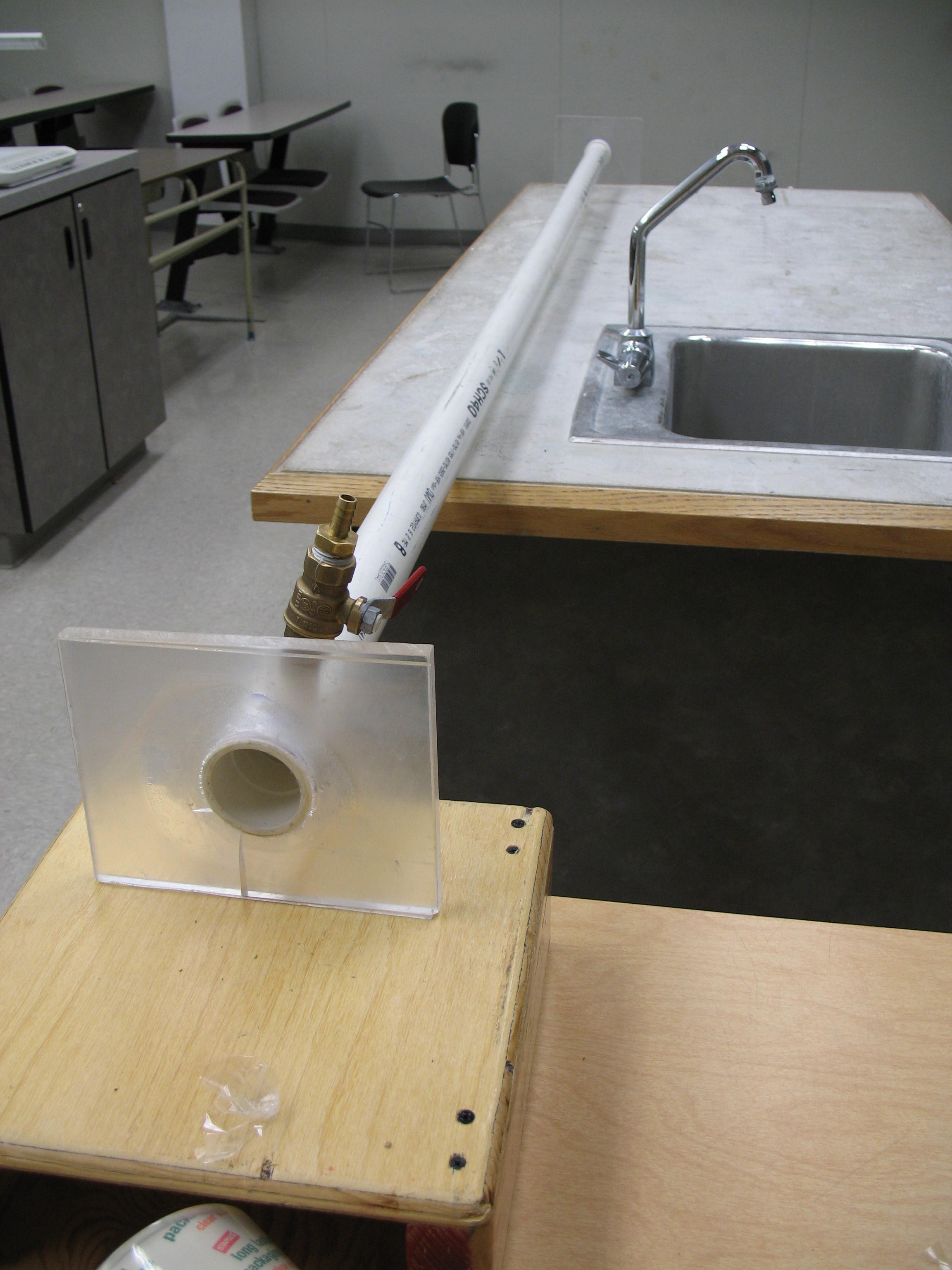Vacuum Cannon

Vacuum Cannon
PIRA 2B30.70
The Vacuum Cannon consists of a PVC pipe that is 2.52m long with the endcaps on with an inner diameter of 5cm, with one endcap having a valve to be used for evacuating the pipe.
A ping pong ball is placed inside the pipe, and each end-cap is sealed off with 2.8” – 3” wide packing tape, and the pipe is evacuated using a vacuum pump attached to the valve on one end-cap. The tape is then punctured on the end with the valve, and the explosive pressure wave going down the pipe through this hole will shoot the ping pong ball out the other end. Under ideal circumstances, the ping pong ball should be capable of shooting through two pop cans and denting a third placed in front of the end of the cannon.
The most important element in getting this demo to work is to tape the ends correctly.
Correct way of setting up the cannon
Place one strip of tape over the entire opening of either end-cap. Use two other strips on the top and bottom of this strip to secure the edges to the acrylic plate, but don’t have this tape overlapping the opening of the pipe. These strips of tape ensure that the central one will not buckle inwards when the pipe is evacuated. Use as little tape as possible so that it is easy for it to break inward when the tape is pierced.
The tape must be made as flat as possible across the acrylic plate in order to maintain a good vacuum seal. It should be nearly invisible if applied correctly.
Pictured left is a correctly taped end-cap - the tape is barely visible except for some reflection of the ambient light off the flat surface.
Schematic of how to layer the tape
One central piece is laid over the center hole, with slightly overlapping pieces laid down above and below it to secure the edges of the first piece that are likely to buckle in when the pipe is evacuated.
When setting up the aluminum cans in front of the vacuum cannon for pulverization, make sure to place them standing upside down. This will ensure that the ping pong ball goes through the middle of the can, where the aluminum is thinnest. Under ideal circumstances, the ping pong ball will pierce two cans and embed itself in a third when the cans are setup this way.
Setting up the Cans
2+ layers of tape on either end-cap will slow down the ping pong ball and/or the pressure wave entering the pipe, and the ping pong ball may or may not pierce the tape at the end. This typically makes for a less dramatic demonstration.
Wrinkles in the tape on any part of the plate coming out from the opening of the pipe can compromise the vacuum, as they act as small air channels from the edge of the tape to the pipe opening. The tape should be nearly invisible if it is applied to the acrylic plate correctly.
Placing the cans in front of the vacuum cannon right side up. Doing so will make the ping pong ball go through the upper angled part of the can, which is made of slightly thicker aluminum. This will slow it down some, and it will rarely pierce through more than one can when they are positioned in this way.
